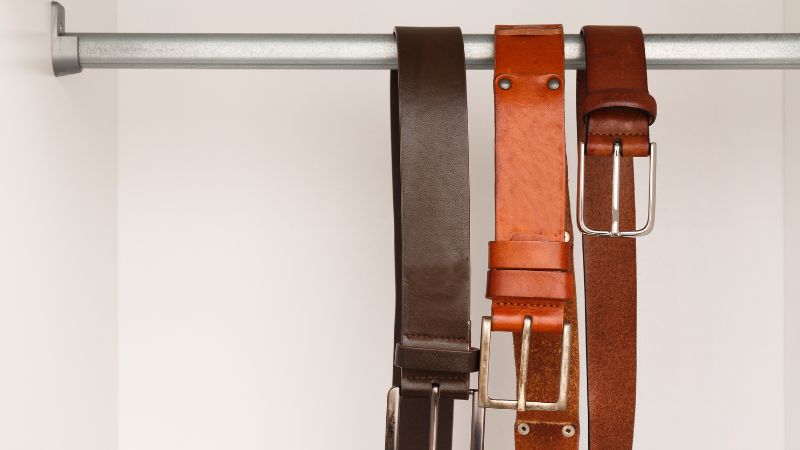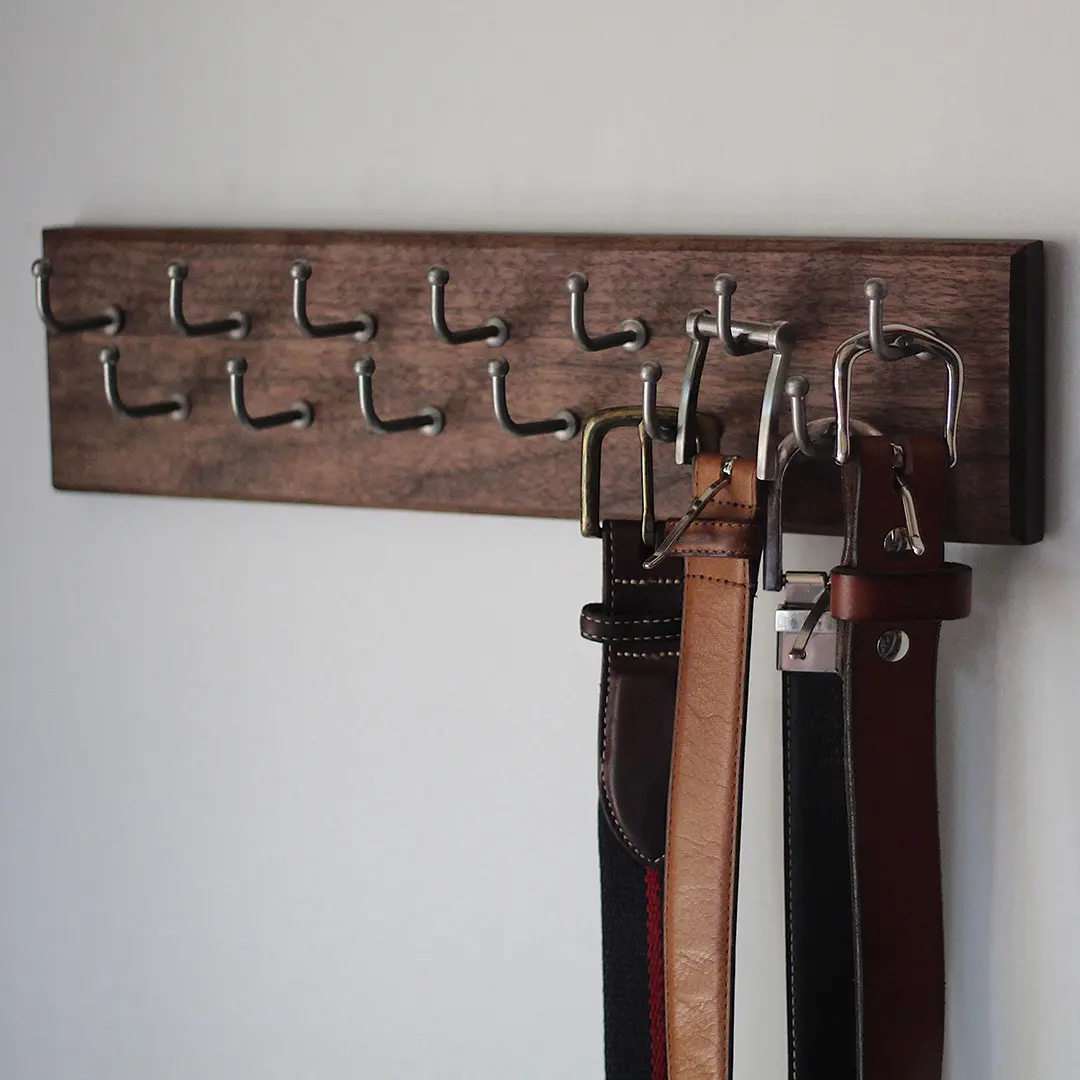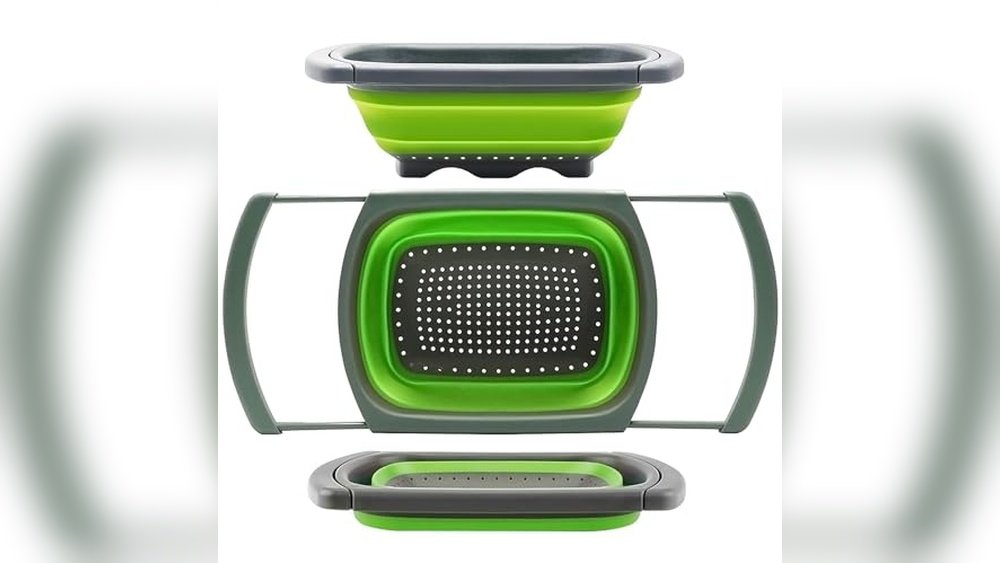Are you tired of digging through a messy drawer every time you need a belt? Keeping your men’s belts organized not only saves you time but also helps maintain their shape and quality.
Whether you have leather, fabric, or casual belts, knowing the right storage methods can make a big difference. You’ll discover simple, effective belt storage ideas that fit your style and space. From hanging solutions to clever rolling techniques, you’ll learn how to keep your belts neat, accessible, and looking their best.
Ready to transform your belt storage and simplify your daily routine? Let’s dive in!
Hanging Belts
Hanging belts offers a simple and effective way to store men’s belts. This method keeps belts straight and avoids wrinkles or creases. It works especially well for leather and faux leather belts that need gentle care. Hanging also helps to easily see and select belts, keeping your closet neat and organized.
Best Materials For Hanging
Wood and metal are the best materials for belt hangers. Wood is sturdy and gentle on leather belts. Metal hangers provide strength and last long. Plastic hangers can work but may cause bending or marks over time. Choose materials that support the belt’s weight without damage.
Choosing The Right Hanger
Select hangers designed for belts with multiple hooks or bars. These hangers save space and keep belts separated. Avoid using regular clothes hangers as they may cause the belt to slip or crease. A sliding belt rack is also a good option for easy access.
Proper Hanging Techniques
Hang belts by their buckle or loop to keep them straight. Avoid folding or bending the belt over the hanger. Space belts evenly to prevent tangling. Ensure belts hang freely without touching the floor or other items.
Using Smooth Hooks
Smooth hooks protect belts from scratches and tears. Sharp or rough hooks can damage leather finishes. Choose hangers with coated or rounded hooks. This small detail extends the life of your belts and keeps them looking new.
Rolling Belts
Rolling belts is a smart way to save space and keep belts neat. This method works well for many belt types. It prevents wrinkles and makes belts easy to find. Rolling also helps maintain the belt’s shape over time. It is a simple, practical storage idea for men’s belts in any closet or drawer.
Ideal Belt Types For Rolling
Soft leather belts roll easily without damage. Fabric and canvas belts also suit rolling well. Avoid rolling thick, stiff belts as they may crack or lose shape. Thin and flexible belts roll best and last longer. Choose belts made from supple materials for this method.
Step-by-step Rolling Method
Lay the belt flat on a clean surface. Start rolling from the buckle end tightly but gently. Keep the roll even and smooth to avoid creases. Roll until the entire belt is coiled. Make sure the buckle stays on the outside for easy access.
Securing Rolled Belts
Use a small elastic band or a soft tie to hold the roll. Avoid tight bands that may leave marks. Cloth strips or Velcro bands work well. Securing keeps the roll tight and prevents it from uncoiling. This step helps belts stay organized and tidy.
Storing Rolled Belts
Place rolled belts upright in a drawer or box. Use small containers or baskets to group them. This keeps belts visible and easy to select. Store belts in a cool, dry place away from sunlight. Proper storage extends belt life and keeps them in good shape.
Storage Environment
Creating the right environment for storing men’s belts helps keep them in great shape. Belts need a space that protects them from damage and wear. A controlled storage environment preserves the material and extends belt life. Proper placement and care reduce creases, cracks, and fading.
Optimal Location For Belts
Choose a cool, dry spot for belt storage. Avoid places that get very hot or cold. A closet or drawer away from heat sources works well. Keep belts in an area with good air circulation. This helps prevent moisture buildup and mold growth. Store belts flat or hanging to keep their shape.
Avoiding Sunlight And Humidity
Direct sunlight can fade and dry out belt materials. Leather belts are especially sensitive to UV rays. Store belts away from windows or bright lights. High humidity causes leather to swell and fabric to weaken. Use a dehumidifier or silica gel packets in storage areas. This keeps belts dry and fresh.

Credit: www.storespace.com
Organization Tips
Organizing men’s belts helps keep them neat and easy to find. Proper storage also protects belts from damage. Use simple ideas to make belt storage practical and tidy. These tips help keep belts in good shape and ready to wear.
Grouping By Color And Style
Sort belts by color to find the right one fast. Group similar shades together, like black, brown, and tan. Arrange by style too, such as casual or formal belts. This keeps your collection clear and easy to browse. It also helps protect delicate materials by storing them with like items.
Using Drawer Dividers
Drawer dividers create separate spaces for each belt. They stop belts from tangling or piling up. Choose adjustable dividers to fit any drawer size. Roll belts gently and place each in its own section. This method saves space and keeps belts visible and organized.
Adhesive Hooks For Quick Access
Stick adhesive hooks inside closet doors or on walls. Hang belts by their buckles for quick grabbing. Hooks keep belts untangled and off surfaces. This is a simple, affordable way to store belts where you can see them easily. It works well for both leather and fabric belts.
Creative Storage Solutions
Creative storage solutions help keep men’s belts neat and easy to find. These ideas save space and protect belts from damage. Use racks or DIY projects to suit your closet style and size.
Organizing belts this way keeps them wrinkle-free and ready to wear. Choose a method that fits your daily routine and available space.
Pull-out Belt Racks
Pull-out belt racks fit inside closets or drawers. They slide out smoothly for easy access. Each belt hangs separately, preventing tangles and creases. This design saves space and looks tidy. You can install racks at different heights for longer or shorter belts.
Sliding Belt Racks
Sliding belt racks mount on walls or inside wardrobe doors. They allow belts to slide side to side for quick selection. This keeps belts visible and organized. Choose racks with hooks spaced to hold thick or thin belts. Sliding racks work well in small spaces.
Diy Belt Storage Ideas
DIY belt storage can be simple and affordable. Use wooden dowels or rods fixed to the wall to hang belts. Repurpose a hanger by adding hooks or clips for belts. You can also use a small tension rod inside a drawer. These ideas let you customize your belt storage easily.

Credit: www.themodestman.com
Maintaining Belt Quality
Maintaining belt quality is key to extending the life of your belts. Proper care keeps them looking new and prevents damage. Simple habits help avoid common issues like creases, cracks, and fading. A little effort protects your investment and keeps your belts stylish for years.
Preventing Creases And Cracks
Leather belts often develop creases if bent or folded tightly. Avoid folding belts sharply to maintain smoothness. Hanging belts on hooks or racks helps keep their shape intact. Rolling belts loosely also works but only if done gently. Store belts away from heat and sunlight to stop leather from drying out. Moisture can cause leather to crack, so keep belts in dry areas only.
Cleaning And Conditioning Tips
Regular cleaning removes dirt and sweat that harm belts. Use a soft cloth to wipe down your belts after use. For leather belts, apply a leather conditioner every few months. This keeps the leather soft and prevents cracks. Avoid harsh chemicals that can damage belt material. Fabric belts can be spot cleaned with mild soap and water. Let belts air dry naturally, away from direct heat sources.

Credit: www.theorganisedyou.com
Frequently Asked Questions
How To Store Mens Belts?
Hang men’s belts on a belt rack or hook to avoid creases. Roll fabric belts loosely and store upright. Keep belts in a cool, dry, ventilated space away from sunlight and moisture. This preserves shape and prevents damage, especially for leather belts.
How To Store A Lot Of Belts?
Hang belts on a specialized rack or hooks to prevent creases. Roll fabric belts loosely and store upright in a drawer or basket. Keep belts in a cool, dry, well-ventilated space away from sunlight and humidity to maintain their shape and quality.
How To Store Ties And Belts In A Drawer?
Store ties flat or rolled to avoid wrinkles; place belts rolled loosely or hung on hooks in a drawer. Use dividers for neatness and keep items in a cool, dry, ventilated space away from sunlight.
How Many Belts Should You Own?
Own at least three belts: one black, one brown, and one casual. This covers most outfits and occasions efficiently.
Conclusion
Storing men’s belts well keeps them neat and long-lasting. Choose hanging for leather belts to avoid creases. Roll fabric belts gently to save space and protect material. Keep belts in cool, dry places away from sunlight. Organizing belts this way makes dressing easier every day.
Small efforts make a big difference in belt care. Try these simple ideas and enjoy a tidy closet.



